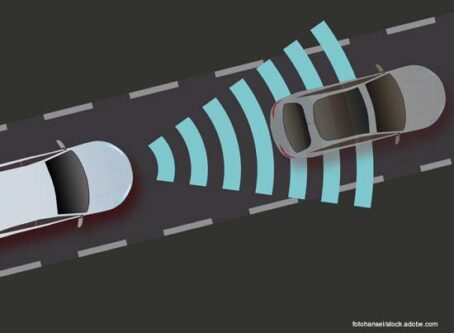FMCSA sets top speed for speed limiter proposal
Update: Late in the afternoon on Monday, Sept. 25, the FMCSA amended its report to no longer include a top speed in the rule summary for speed limiters. The updated story can be found here.
We’ve known for more than a year that the Federal Motor Carrier Safety Administration wanted to require speed limiters on commercial motor vehicles. But we didn’t know what that top speed would be. Until now.
The U.S. Department of Transportation’s September 2023 Significant Rulemaking Report indicates that FMCSA will propose that most commercial motor vehicles be speed-limited to no faster than 68 mph.
According to the report, the requirement would apply to commercial motor vehicles manufactured after model year 2003 and weighing more than 26,000 pounds. FMCSA is targeting Dec. 29 for when it expects to publish a supplemental notice of proposed rulemaking. Once that is published, the public will have an opportunity to file comments.
“This supplemental notice of proposed rulemaking will help to ensure that commercial motor vehicles subject to its requirements are operated safely,” the significant rulemakings report states. “This supplemental notice of proposed rulemaking supersedes the notice of proposed rulemaking jointly issued by FMCSA and the National Highway Traffic Safety Administration published in 2016.”
The Owner-Operator Independent Drivers Association opposes a speed-limiter mandate.
“Forcing trucks to speeds below the flow of traffic increases interactions between vehicles and leads to more crashes,” OOIDA President Todd Spencer said. “It’ll be like an obstacle course for passenger vehicle drivers on our highways. This isn’t safe for truckers, but especially not safe for passenger vehicle drivers sharing the road with trucks. The unintended consequences of this misguided regulation will cost innocent lives.”
Background
Last year, FMCSA issued an advance notice of supplemental proposed rulemaking that considers requiring commercial motor vehicles with a gross vehicle weight of 26,001 pounds or more to be equipped with speed limiters. A top speed was not determined at that time, but previous proposals floated the possibilities of 60, 65 and 68 mph. Safety groups lobbied to set the top speed at 60 mph.
The agency’s advance notice garnered significant opposition. More than 15,000 comments were filed, and the majority came from truck drivers opposed to a mandate. Some said a mandate would cause them to leave the industry.
“I’m an owner-operator,” Michael Perry wrote in comments to the agency. “This is not about safety. It’s more dangerous to be below the speed limit than to go with the traffic. If this goes into effect, I will be retiring.”
Many truckers spoke out about the dangers of speed differentials. Speed limits are as fast as 85 mph in parts of the United States.
States’ rights
Since the repeal of the National Maximum Speed Law in 1995, the authority to establish speed limits on state highway systems has rested with the states. Many of those states have determined over the years that a uniform speed limit for cars and trucks is safest.
Some lawmakers argue that an FMCSA mandate would prevent states from determining what is safest for their roadways.
“We need the ability to have our state legislators and state senators to listen to the people and make adjustments,” said Rep. Josh Brecheen, R-Okla. “When the federal government does something, it’s put in place, and ingenuity and creativity are often lost. We need the ability to adjust to different conditions.”
The DRIVE Act, introduced by Brecheen in the House and Sen. Steve Daines, R-Mont., in the Senate, would stop FMCSA from requiring speed limiters on commercial motor vehicles.
Daines said that an individual state’s geography and population should play a role in how speed limits are determined. He recently told Land Line Now that he believes a mandate would actually decrease safety.
“I think the average person is going to look at and see that it’s going to create unsafe driving conditions,” Daines said. “You have slow-moving trucks and fast-moving vehicles. The truck is on the road for longer periods of time. That’s not a good thing.”









